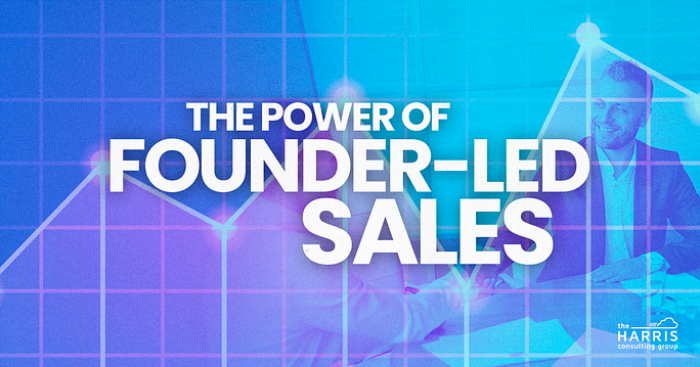In today’s fast and busy industry, the role of founder led sales is often multi-faceted. Their role ranges from visionary leadership to hands-on involvement in various aspects of the business. Let’s not forget taking out the trash at the end of the night.
Being a founder and working on founder led sales is both exhilarating and sometimes exhausting. And that’s ok to be and that’s ok to say out loud.
One critical domain where founders can make a substantial impact is in sales, particularly through a strategy known as Founder-Led Sales. In this article, we are going to explore the essential elements of a Go-To-Market plan, and unravel the intricacies of a GTM strategy.
Founder-Led Sales
Founder Led Sales refers to the requirement of company founders in the sales process in the earliest stages of the company. In most cases a sales team and sales leader does not even exist.
Moreover, even when you bring on those first sales people the founder must still engage in sales execution. Founder led sales, never stops, period.
During the start up phase of founder led sales the founder must engage directly with potential customers. Also, they must build relationships, and drive revenue growth.
This strategy is rooted in the belief that founders possess a unique understanding of the product, market, and customer needs. Thus, founder led sales make their involvement in sales invaluable.
Additionally, during the founder led sales phase many customers chose to purchase because of the founder themselves. They are buying their knowledge, or their expertise on the subject matter, and often the designer of the product or service.
One can never discount the instant credibility the title “Founder” has in sales regardless of the company’s life-cycle. In these cases, founders are part of the planning of a comprehensive strategy.
The go-to-market outlines how a company will bring its product or service to market. Moreover, this strategy also helps to acquire customers, and achieve sustainable growth.
In other words, GTM encompasses various elements, each crucial to the success of the business.
Without understanding these elements founder led sales efforts will fail. Consequently, the credibility mentioned above vanishes, forever. Here are key components of an effective GTM plan:

-
Market Analysis from Founder Led Sales:
- Define the pain you want to solve first. What is the use case that people wish they could do better, faster, and cheaper?
- Analyze market trends, competitors, and potential challenges around the pain(s).
- Hypothesize the target market and customer segments. This way, you can engage with the quickest for product market validation.
-
Research – Customer Persona Development:
- Talk to anyone and everyone to get their opinion of the pain as well as your proposed solution
- Create detailed customer personas to understand the target audience.
- Refine and tailor messaging around the pains. Base your messages on continuous feedback from the people you are speaking with.
-
Research – Product Positioning and Messaging:
- Ask your contacts:
- why your product is not better than the way they are currently doing things?
- why the competitor is so good? Are they bad? Do you know why?
- how bad does it have to be before they will consider an option in general?
- what should happen to consider actually purchasing a solution?
- Define the positioning, the messaging and your competitive advantages.
- Go back to your contacts and simply ask them to fill in the blank: “Hey Richard, what you’re building is cool, but…”
- Ask your contacts:
-
Research – Pricing Strategy:
- Do the math.
- Generally speaking our service will help someone do ____ and ____ faster.
- This has a soft cost of _____. Meaning what are the things that are not getting done because of the current way?
- How much of their growth is delayed because of the current way?
- What are the other things on their to do list that could be done faster with your solution?
- Which is the economic impact to their company by having this new solution?
- Confirm this math with your contacts.
- Consider factors such as competitive pricing, perceived value, and market demand.
- Develop a pricing strategy that aligns with the product’s value proposition.
- Do the math.
-
Initial Founder Led Sales, Marketing and Communication:
- Think of use cases. Use cases does not mean your “algorhythm” or your “AI”.
- Talk about the pains you solve, not what you do.
- Nobody pays attention even when they ask “What do you do?”
- They do pay attention when I say: “I teach people how to earn the right to ask questions, which questions to ask and when that helps them close sales opportunities.”
- Utilize various marketing channels, including digital marketing, content creation, and social media.
-
First Customers for Founder Led Sales :
- Standard, friends, families, business acquaintances, referrals
- Social selling is critical. Fish where the fish are. If they are on LinkedIn, then post there. If they are part of communities, join and engage the conversation.
- Blogging is critical for the short and long term. Short term is critical for initial validation. Long term it’s critical for SEO.
- Explore other online and offline sales channels, partnerships, and distribution networks.
Founder Led Sales’s Vision
One of the biggest challenges when it comes to Founder Led Sales is what we call “Revenue Block”. This is the part where the founder has a vision about solving a problem.
They understand it intimately, and almost instinctively. Thus, they can even get the ideas out of their head and create something.
Then, when they try to go to market with a Founder Led Sales approach they cannot understand why everyone doesn’t see their beautiful baby the same way they do.
Tips to encourage those going through Founder Led Sales to think.
-
The founders’ vision into the Go-To-Market (GTM) strategy is a pivotal element. It will help to ensure a company’s success.
-
Their vision serves as the guiding light. It provides a clear direction for the entire organization especially during the various founder-led sales growth stages. By weaving your vision into the GTM strategy, you will create a cohesive and authentic narrative.
-
This narrative must resonate with both internal teams and external audiences. Your passion is a potent force that can be harnessed to infuse enthusiasm and commitment during your founder led sales conversations.
-
Do not confuse passion with resolving pain.
-
Your passion must be articulated in use case story telling in relation to your prospects and customers. Not how wonderful and smart your 6 month old baby is. This is authenticity in Go-To-Market strategies and founder led sales.
-
Authenticity, in turn, cultivates trust and credibility. These are essential ingredients for successful customer relationships.
-
Now your prospect has “fallen in trust” with the founder and believes in their deep understanding to solve their issues.
Founder led sales have to be able to articulate the intricacies and value propositions of the product with firsthand knowledge. On this context, the founder adds a layer of expertise to sales interactions.
This expertise enhances the quality of customer engagement. Moreover, it also positions the company as a knowledgeable and reliable partner.
Founder-Led Sales, coupled with a well-crafted Go-To-Market plan and strategy, can be a powerful combination.
Companies must actively involve founders in the sales process. They also have to align their efforts with a comprehensive GTM plan. By doing so companies can establish a strong foundation for:
- sustainable growth,
- customer acquisition, and
- market success.
Conclusion
The evolving nature of the business landscape requires constant refinement and adaptation. Thus, companies need to make the GTM strategy a dynamic framework. This can propel a company to new heights.
Oh, and no, Founder Led Sales and Go To Market never goes away. It evolves as the company evolves.
When you add new features, guess who needs to sell?
If you hire a revenue team, guess who needs to explain the GTM plan?
In case a founder hires its first VP of Sales, guess who still has to engage?
For every round of funding a startup raises from VCs, guess who’s in charge of explaining all of this?
When you do a road show to launch your IPO, guess who is still discussing a go to market strategy?
Do you need extra help to boost the power of Founder-Led Sales? Let’s talk about it! I am always open to a free “pick your brain” conversation.
For additional insights and expert guidance on SKO planning, consider visiting The Harris Consulting Group.







